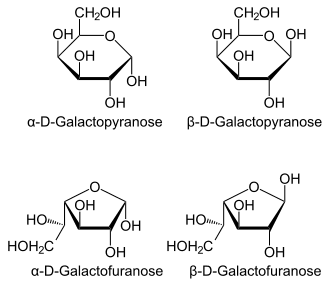Contents
From the first days of life, a child needs galactose for growth and strengthening of immunity. The baby receives a large amount of this substance with mother’s milk. Over the years, the need for galactose decreases, but it still remains one of the main ones.
Galactose is one of the main sources of energy for the body. It is simple milk sugar. It is necessary for the full functioning of our body, and is also used in medicine and microbiology.
Galactose rich foods:
General characteristics of galactose
Galactose is a monosaccharide that is very common in nature. It is close in composition to glucose, only slightly different from it in its atomic structure.
Galactose is found in some microorganisms, in almost all products of plant and animal origin. Its highest content is found in lactose.
There are two types of galactose: L and D. The first, in the form of a proportion of polysaccharides, was found in red algae. The second is found much more often, it can be found in many organisms in the composition of various substances – glycosides, oligosaccharides, in a number of polysaccharides of bacterial and plant nature, pectin substances, gums. When oxidized, galactose creates galacturonic and galactonic acids.
Galactose is used in medicine as a contrast agent for ultrasound, as well as in microbiology to determine the type of microorganisms.
Daily requirement for galactose
The galactose level should remain at 5 mg / dL in the blood. You can easily get your daily allowance for galactose if you eat dairy products or celery. Despite the fact that galactose is very often found in foods, it is simply not present in pure form in organisms or foods. That is, galactose in foods should be looked for by the presence of lactose.
The need for galactose is increasing:
- in infants;
- during breastfeeding (galactose is an essential component for the synthesis of lactose);
- with increased physical activity;
- with increased mental stress;
- under stress;
- with constant fatigue.
The need for galactose decreases:
- in old age;
- if you are allergic to galactose or dairy products;
- with bowel diseases;
- with inflammatory diseases of the female genital organs;
- with heart failure;
- in violation of assimilation – galactosemia.
Digestibility of galactose
Galactose is rapidly absorbed by the body. As a monosaccharide, galactose is the fastest source of energy.
In order for the body to absorb galactose, it enters the liver and turns into glucose. As with any carbohydrate, the absorption rate of galactose is very high.
Impaired absorption of galactose is called galactosemia and is a severe, inherited condition. The essence of galactosemia is that galactose cannot be converted to glucose due to the lack of an enzyme.
As a result, galactose accumulates in body tissues and blood. Its toxic effect destroys the lens in the eye, liver and central nervous system. If not treated promptly, the disease can be fatal, as it causes cirrhosis of the liver.
Galactosemia is treated mainly by a strict diet, in which the patient does not consume foods that contain galactose or lactose at all.
Useful properties of galactose and its effect on the body
Galactose is actively involved in the creation of cell walls, and also helps tissues to be more elastic. It is part of the lipids of the brain, blood and connective tissue.
Galactose is indispensable for the brain and nervous system. Normalized galactose levels prevent the development of dementia and nervous disorders. The risk of developing Alzheimer’s disease is reduced.
It also has a beneficial effect on the functioning of the organs of the gastrointestinal tract.
Galactose takes part in the creation of hemicellulose, which is necessary for the construction of cell walls.
Prevents the development of certain diseases of the nervous system.
Interaction with other elements
Galactose reacts with glucose to create the disaccharide you’ve probably heard a lot about – lactose. Easily soluble in water.
Signs of a lack of galactose in the body
Signs of a lack of galactose are similar to a lack of carbohydrates – a person quickly and strongly gets tired, feels that it is difficult for him to concentrate. He easily falls into depression and is unable to develop physically.
Galactose, like glucose, is a source of energy for the body, so its level should always be normal.
Signs of excess galactose in the body
- disruption of the nervous system and hyperactivity;
- disruption of the liver;
- destruction of the eye lens.
Factors affecting the content of galactose in the body
Galactose enters the body with food, and is also formed in the intestine by hydrolysis from lactose.
The main factor affecting the galactose content is the presence of a special enzyme that converts galactose into a substance (glucose-1-phosphate) that can be absorbed by humans. In the absence of this enzyme, an imbalance of galactose in the body begins, which leads to the development of diseases.
Regular consumption of foods containing galactose is also very important. For a healthy person, insufficient consumption of appropriate foods leads to developmental disorders, both physical and mental.
Galactose for beauty and health
Galactose is very important for the human body as a source of energy. It allows him to grow and develop, remain vigorous and energetic.
Galactose is important for the physical development of the body, therefore athletes actively consume foods and preparations containing this substance.











έχετε ακούσει ποτέ για την επίδραση της Γαλακτόζης σε καρκινοπαθείς? έχουν δημοσιευτεί από Γερμανούς και Ελβετούς επιστήμονες. Λένε ότι καταπολεμάει τα καρκινικά κύτταρα